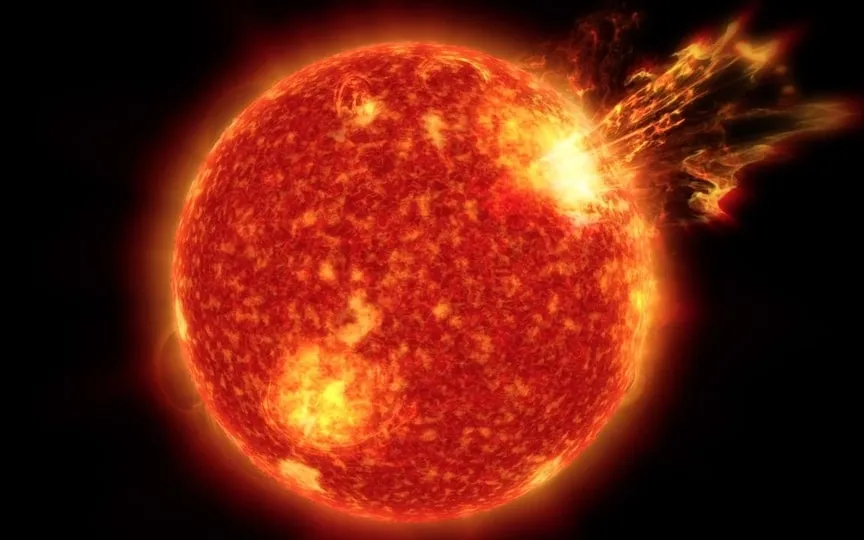Solar Storms Expected to Impact Earth Today – Get the Latest Information
According to this week’s solar storm predictions, today, November 4, is expected to be the most severely impacted by solar activities. The accuracy of this forecast is likely to be confirmed as three separate coronal mass ejections (CMEs) are currently on their way towards Earth. Although the first two CMEs are slightly off-course, they are still projected to have a glancing impact on our planet. However, if these two CMEs merge to form a cannibal CME, the situation could rapidly change. The third CME poses the highest risk as it is directly heading towards Earth. Consequently, there is a possibility that we may experience a G2-class storm later today.
According to a SpaceWeather.com report, “up to three CMEs could contact Earth’s magnetic field. The first two CMEs are mostly off-target, but could pack a punch on Nov. 4. If they coalesce into a Cannibal CME, the result could be a small G1 -class geomagnetic storm.It also added that of greater interest is the third CME that left the Sun yesterday.
Solar storm fears are increasing
According to the report, the origin of the third CME is a “complex burst of magnetic filaments” that occurred in the Sun’s northern hemisphere. NASA’s same model has revealed that it could hit late at night today.
The worst possible scenario for us could be if the first two CMEs turn cannibalistic and the third hits while the effect of the first is still active. This could cause a solar storm with G2 class potential. This can show its effect even in mid-latitudes.
But if these certain conditions are not met, we may have to face only a G1 class storm. Such solar storms may not be strong enough to affect mobile networks or damage satellites, but they can still cause radio blackouts and disrupt GPS signals.
The role of NOAA’s DSCOVR satellite in monitoring solar storms
NOAA monitors solar storms and the Sun’s behavior with its DSCOVR satellite, launched in 2016. The returned data is then run through the Space Weather Prediction Center and the final analysis is done. Different measurements are made of the temperature, speed, density, degree of orientation and frequency of solar particles.




